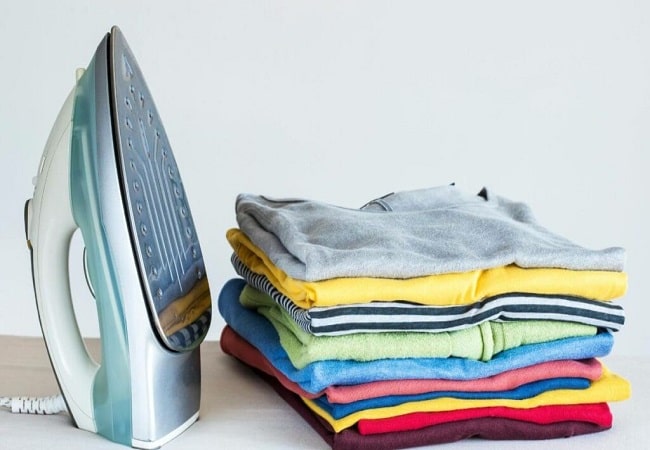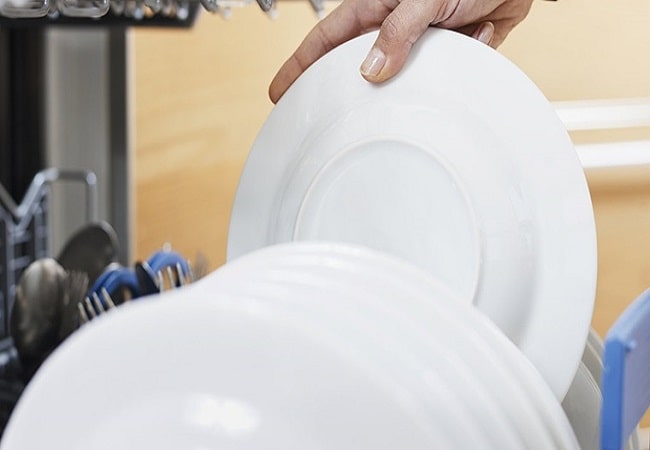Ironing is an essential task for maintaining a polished and well-groomed appearance. But achieving the perfect press with an ironing machine can be challenging, especially if you need help figuring out what you’re doing. This article will provide 5 tips for achieving the perfect press with your ironing machine.
Contents
- 1 Choose the right ironing machine for your needs
- 2 Use the correct heat setting for the fabric
- 3 Tips For Achieving The Perfect Press With Your Ironing Machine
- 4 Use the correct ironing technique
- 5 Use a quality ironing board and cover
- 6 Regularly maintain and clean your ironing machine
- 7 Frequently Asked Questions
- 8 Conclusion
Choose the right ironing machine for your needs

When it comes to ironing machines, you have a few different options to choose from. Steam irons, steam generators, and steam presses are all popular choices, each with its benefits and drawbacks.
Steam irons are the most basic type of ironing machine. They’re compact and easy to use, making them a good choice for small loads of laundry. However, they don’t have as much steam power as other ironing machines, so they may not be as efficient for larger loads.
Steam generators are a step up from steam irons. They have a larger water tank and a separate steam generator unit, which allows them to produce more steam. This makes them a good choice for larger loads of laundry and for ironing items that are difficult to smooth out, such as bed linens or drapes.
Use the correct heat setting for the fabric
The correct heat setting for the fabric being ironed is crucial for achieving a perfect press. Different fabrics require different heat settings, so it’s important to consult the care label or do a patch test to ensure you’re not accidentally damaging the fabric.
Generally, low heat is best for delicate fabrics like silk and rayon, medium heat is suitable for most cottons and polyesters, and high heat is for heavier fabrics like wool and denim.
Tips For Achieving The Perfect Press With Your Ironing Machine
In addition to using the correct heat setting, it’s important to use the correct ironing technique to avoid damaging fabrics. Here are a few tips for ironing different types of fabrics:
Cotton and polyester
These fabrics can be ironed with a back-and-forth motion using moderate steam. Start at the highest point of the fabric and work your way down, pressing to smooth out any wrinkles.
Delicate fabrics
Delicate fabrics like silk and rayon should be ironed on a low heat setting with minimal steam. Use a gentle pressing motion to smooth out wrinkles, and avoid applying too much pressure to the fabric.
Pleats and buttons can be tricky to iron, but you can use a few tricks to make it easier. For creases, use a pressing motion to smooth out the fabric, and then use a back-and-forth motion to iron the pleats into place. For buttons, cover them with a damp cloth before ironing.
Use the correct ironing technique
It’s important to use the correct ironing technique to avoid damaging fabrics and to achieve a perfect press. Different fabrics require different ironing techniques, so it’s important to iron each fabric properly.
For example, using moderate steam, you can iron cotton and polyester fabrics with a back-and-forth motion. Start at the highest point of the fabric and work your way down, pressing to smooth out any wrinkles.
You should iron delicate fabrics like silk and rayon on low heat and with minimal steam. Use a gentle pressing motion to smooth out wrinkles, and avoid applying too much pressure to the fabric.
Pleats and buttons can be tricky to iron, but you can use a few tricks to make it easier. For creases, use a pressing motion to smooth out the fabric, and then use a back-and-forth motion to iron the pleats into place and cover buttons with a damp cloth before ironing to prevent them from becoming shiny or melting.
Use a quality ironing board and cover
Using a good quality ironing board and the cover is crucial for achieving a perfect press. A good ironing board should be sturdy, stable, and large enough to accommodate the items you’ll be ironing. It should also have a smooth, heat-resistant surface to prevent fabric scorching or damage.
There are a few key things to consider when selecting an ironing board and cover:
Size
Make sure the ironing board is large enough to accommodate the items you’ll be ironing. If you plan on ironing large items like sheets or tablecloths, opt for a wider board.
Material
Ironing boards are typically made of wood or metal. Wood boards are generally more durable and stable but can be more expensive. Metal boards are lightweight and easy to store, but wood boards may be more stable.
Cover
The ironing board cover should be heat-resistant and smooth to prevent fabric scorching or damage. It should also be easy to attach, remove, and fit on the board.
Regularly maintain and clean your ironing machine
Regularly maintaining and cleaning your ironing machine is essential for keeping it in good working order and ensuring it performs at its best. Here are a few tips for maintaining and cleaning different types of ironing machines:
Empty the water tank
Empty the water tank after each use to prevent mineral deposits from building up. If you live in an area with hard water, you should use distilled water to help prevent mineral build-up.
Clean the steam vents
Use a small brush or toothbrush to clean the steam vents on your ironing machine. This will help remove any build-up of lint or dirt, which can obstruct the flow of steam.
Descale the machine
If you notice that your ironing machine produces less steam than usual, it may be time to describe it. To do this, fill the water tank with a mixture of equal parts water and white vinegar, and run the machine on the highest steam setting for a few minutes.
Replace the water filter
Some ironing machines have a water filter to help remove impurities from the water. If your machine has a water filter, replace it regularly to ensure it works properly.
By regularly maintaining and cleaning your ironing machine, you can keep it in good working order and ensure it performs at its best. This will help you achieve a perfect press every time and extend the lifespan of your machine.
Frequently Asked Questions
How to remove wrinkles from clothes without iron?
There are several ways to remove wrinkles from clothes without using an iron:
- Hang your clothes in the bathroom while you take a hot shower. The steam from the shower will help to relax the fibers in the fabric, causing the wrinkles to fall out.
- Use a steamer. A steamer is a handheld device that uses hot steam to remove wrinkles from clothes. It’s a quick and easy way to remove wrinkles and is gentle on fabrics, so it’s perfect for delicate items.
- Use a hair dryer. Set your hair dryer to the low heat setting and hold it about 6 inches away from the wrinkled area. The heat from the hair dryer will help to relax the fibers in the fabric, causing the wrinkles to fall out.
- Use a damp cloth. Dampen a cloth with water and place it over the wrinkled area. Then, use a hot iron to press the damp cloth, allowing the steam from the cloth to relax the fibers and remove the wrinkles.
By using one of these methods, you can easily remove wrinkles from your clothes without using an iron.
How to remove wax from clothing without an iron?
Here are a few steps you can take to remove wax from clothing without using an iron:
Allow the wax to harden: If it is still in liquid form, allow it to harden completely before attempting to remove it. This will make it easier to lift off the fabric.
Scrape off as much wax as possible: Use a dull knife or a credit card to scrape off as much wax as possible gently. Be sure to scrape in the same direction as the fabric to avoid damaging it.
Place a paper towel or a piece of brown paper over the wax: Place a paper towel or a piece of brown paper over the wax, and use a hot iron to press the paper. The heat from the iron will help to melt the wax, which the paper towel or brown paper will absorb.
Repeat until the wax is removed: Continue pressing the wax with a hot iron and fresh paper towels or brown paper until all the wax is removed.
Wash the clothing: Once the wax is removed, wash the clothing according to the care instructions on the label. This will help to remove any remaining wax or stains.
Which clothes should not be ironed?
There are a few types of clothing that you should not iron:
Delicate fabrics: Delicate fabrics like silk, rayon, and lace should not be ironed, as the heat and pressure of the iron can damage or stretch the fabric. Instead, these fabrics should be steamed or hung in a steamy room to remove wrinkles.
Knit fabrics: Knit fabrics like jersey and wool can become stretched or misshapen when ironed, especially if they are stretched while the iron is applied. Instead, use a steamer or hang the clothes in a steamy room to remove wrinkles.
Leather: Leather should not be ironed, as the heat can cause the leather to dry out and become brittle. Instead, use a leather conditioner to remove wrinkles and restore moisture to the leather.
Sequins and beads: Sequins and beads can become damaged or fall off when ironed, so it’s best to avoid ironing clothes with these embellishments. Instead, use a steamer or hang the clothes in a steamy room to remove wrinkles.
Why do you sprinkle water before ironing?
Sprinkling water on clothes before ironing can help to remove wrinkles and refresh the fabric. When the water is applied to the fabric and then heated with the iron, the steam produced helps to relax the fibers in the fabric, making it easier to smooth out wrinkles.
Sprinkling water can also help to remove static electricity from the fabric, which can cause clothes to become wrinkled. Additionally, the water’s moisture can help remove any odors or stale smells from the fabric.
To sprinkle water before ironing, lightly mist the clothing using a spray bottle. Be sure to keep the fabric manageable, as too much water can cause the fabric to become wrinkled or stretched. Then, a hot iron presses the fabric, allowing the steam to relax the fibers and remove the wrinkles.
Conclusion
In conclusion, achieving the perfect press with your ironing machine requires knowledge and effort. By following these 5 tips, you can ensure a smooth and efficient ironing experience with perfectly pressed garments every time.
Following these tips, you can achieve a perfect press every time and maintain a polished and well-groomed appearance. Suppose you want to learn more about ironing and ironing machines. In that case, many resources are available online, including instructional videos, blogs, and forums. Happy ironing!





Leave a Reply